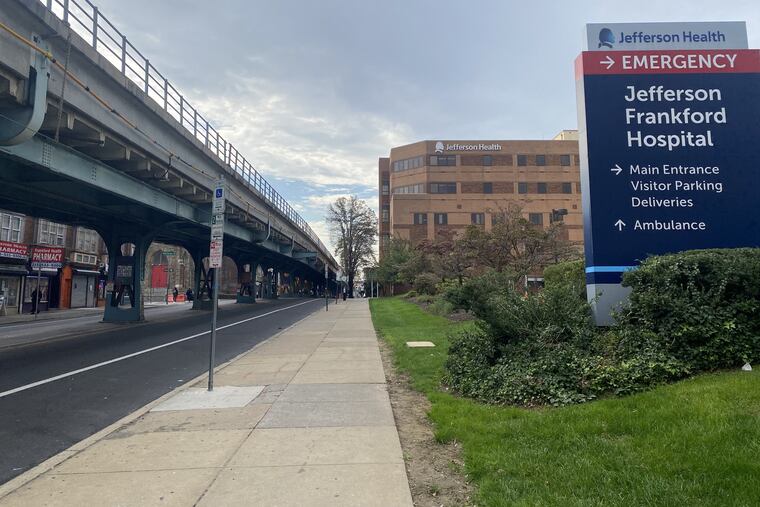Jefferson Health has smaller first-quarter loss, expects to nearly break even for full fiscal year
The nonprofit had a $48 million loss over the summer, compared to $84.5 million last year.

Thomas Jefferson University, which owns Jefferson Health, on Tuesday reported a $48 million loss on operations over the summer, but the nonprofit’s chief financial officer said the health system is moving in the right direction after an $83.5 million loss in the same period last year.
John Mordach, who became Jefferson’s top financial executive in March, expects continued and gradual gains. He said Jefferson’s turnaround is “not a Mount Everest kind of thing.”
The system is projecting that it will get close to break-even for the fiscal year that ends June 30, 2024, Mordach said in an interview this week. That’s after four years of significant annual operating losses, excluding the benefit of federal COVID-19 aid.
The health system has seen reductions in expensive contract staffing, shorter inpatient stays, and other improvements, according to Mordach.
“With the losses we have through this quarter, we’ve got to obviously start turning into positive territory, and we expect that,” Mordach said in an interview. It will happen without the help of one-time gains, such as asset sales, he said.
Mordach cited several areas of improvement in the quarter:
The use of high-cost contract labor is down significantly, thanks to the creation of an internal pool of nurses circulating among the system’s hospitals. “Every week they decide which of our 17 hospitals have the greatest need. It has improved satisfaction, reduced our contract labor in nursing by close to half from where we were a year ago,” Mordach said. “We still have room to go.”
A problem at area health systems recently has been increasing numbers of patients who occupy hospital beds — for as long as 48 hours — but don’t count as inpatients for insurance payments. That can result in $5,000 to $7,000 less revenue to the hospital per patient, Mordach said, even though the costs are the same as for one who qualifies as an inpatient. In the September quarter, Jefferson’s number of so-called observation cases fell by 13% to 11,490. “That’s a good thing,” he said. “In some of those cases, we succeeded in converting those to an inpatient stay.”
Jefferson reported a decline in the average number of days patients stayed in the hospital to 5.84 days from 6.08 days. Longer lengths of stay typically hurt hospital finances because insurers pay them based on a diagnosis. They don’t get paid more for longer stays, and it means a new patient can’t use the bed. Jefferson’s new virtual nurse program is helping get patients out of the hospital more quickly when it’s medically appropriate, Mordach said. The combination of a bedside nurse, the admitting physician, and a remote nurse is making the discharge process more efficient, he said.
Mordach said the internal nursing pool and the virtual nursing program are also improving job satisfaction for nurses, who account for 12,000 of the system’s 40,000-plus employees.
“It’s crucial with recruitment, retention, and satisfaction for us to try to find ways to make their jobs a little bit easier,” he said.